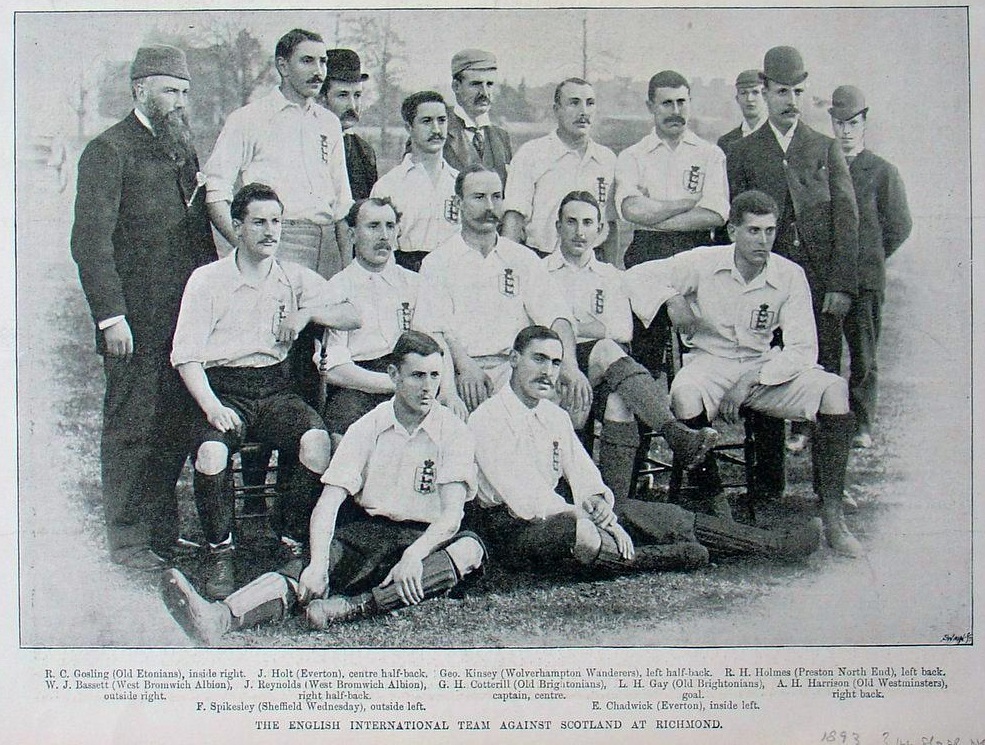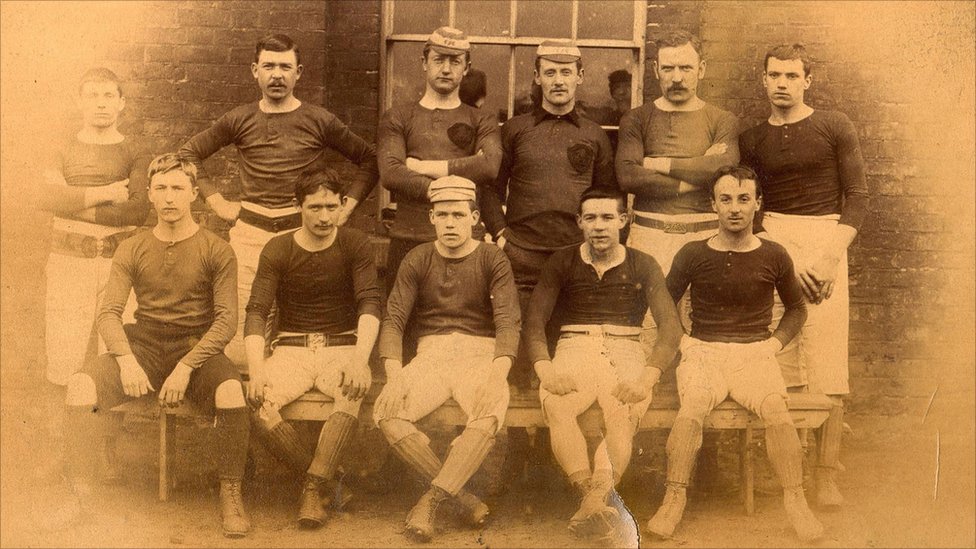|
Willie Reid (footballer, Born 1884)
William Reid (3 May 1884 – 13 May 1964) was a Scottish international football player and manager, who played as a striker. Playing career Club Born in Baillieston, Lanarkshire, Reid began his senior career in 1903 with Morton, whom he joined from Baillieston Thistle. He scored 11 league goals in two seasons before a move to Third Lanark in April 1906; his only official appearance for the club was in the Scottish Cup final defeat to Hearts later that month. A transfer to Motherwell followed, where he scored 35 times in two seasons before a loan spell in England with Portsmouth. Reid returned to Scotland in April 1909 when signed by Rangers, where again his debut came in a Scottish Cup final (in this case the replay of the 1909 event which was followed by a riot by spectators with the trophy withheld) but this time he stayed with his new club for a long period, [...More Info...] [...Related Items...] OR: [Wikipedia] [Google] [Baidu] |
Baillieston
Baillieston () is a working class suburb of Glasgow, Scotland. It is about east of the city centre. It also gives its name to Ward 20 of Glasgow City Council and forms part of the Glasgow East constituency of the UK Parliament. Geographical position Once a separate village, Baillieston is now on the periphery of the Glasgow urban area, situated west of a major interchange between the M8, M74 and M73 motorways and the A8 trunk road, between the town of Coatbridge in North Lanarkshire, and the neighbouring Glasgow neighbourhoods of Sandyhills, Barlanark and Mount Vernon, Glasgow, Mount Vernon. Suburban developments in the vicinity such as Barrachnie, Garrowhill, Springhill, Glasgow, Springhill and Swinton, Glasgow, Swinton are generally considered to fall within the larger modern Baillieston district. The area is served by Baillieston railway station, with the Broomhouse, Glasgow, Broomhouse neighbourhood on the opposite side of the tracks accessed via a rebuilt road bridg ... [...More Info...] [...Related Items...] OR: [Wikipedia] [Google] [Baidu] |
Scottish Cup
The Scottish Football Association Challenge Cup,Rules of the Scottish Football Association Challenge Cup , Scottish Football Association. Retrieved 2 September 2014. commonly known as the Scottish CupScottish Cup , Scottish Football Association. Retrieved 2 September 2014. is an annual association football knock-out cup competition for men's football clubs in Scotland. The competition was first held in 1873–74 Scottish Cup, 1873–74. Entry is open to all 122 clubs with full membership of the Scottish Football Association (SFA), along wit ... [...More Info...] [...Related Items...] OR: [Wikipedia] [Google] [Baidu] |
1910–11 Scottish Division One
The 1910–11 Scottish Division One season was won by Rangers F.C., Rangers by four points over nearest rival Aberdeen F.C., Aberdeen. League table Results References Scottish Football Archive {{DEFAULTSORT:1910-11 Scottish Division One 1910–11 Scottish Football League Scottish Division One seasons 1910–11 in European association football leagues, Scottish ... [...More Info...] [...Related Items...] OR: [Wikipedia] [Google] [Baidu] |
List Of Scottish Football Champions
A list is a set of discrete items of information collected and set forth in some format for utility, entertainment, or other purposes. A list may be memorialized in any number of ways, including existing only in the mind of the list-maker, but lists are frequently written down on paper, or maintained electronically. Lists are "most frequently a tool", and "one does not ''read'' but only ''uses'' a list: one looks up the relevant information in it, but usually does not need to deal with it as a whole". Lucie Doležalová,The Potential and Limitations of Studying Lists, in Lucie Doležalová, ed., ''The Charm of a List: From the Sumerians to Computerised Data Processing'' (2009). Purpose It has been observed that, with a few exceptions, "the scholarship on lists remains fragmented". David Wallechinsky, a co-author of '' The Book of Lists'', described the attraction of lists as being "because we live in an era of overstimulation, especially in terms of information, and lists help ... [...More Info...] [...Related Items...] OR: [Wikipedia] [Google] [Baidu] |
1905–06 Scottish Cup
The 1905–06 Scottish Cup was the 33rd season of Scotland's most prestigious football knockout competition. The Cup was won by Heart of Midlothian when they beat Third Lanark 1–0.Association Football. The Scottish Final. The Glasgow Herald, 30 April 1906 Calendar First round Second round Second round replay Second round second replay Second round third replay Quarter-final Quarter-final replay Semi-finals ----Replay Second replay Final See also * |
Scotland National Football Team Results (unofficial Matches)
From 1870 to the present day, the Scotland national football team have played various matches that are not accorded the status of official (FIFA) internationals by the governing body, the Scottish Football Association. These include early matches against England prior to the first-ever official international in 1872, wartime fixtures between 1914–1919 and 1939–1946 when official competitions were suspended, overseas tour matches played by a ''Scotland XI'' of varying strength and status, and others as specified. While some of the tour matches (involving players under consideration for the national team, some having already been capped at full level) could be seen as similar in status to those played by the Scotland B team, they have not been recorded officially as such. List of Matches 1870s–1910s 1870–1872 England v Scotland matches The selection of the Scottish XI were players drawn from living and working in and around London area. Some of the players' Scottish ... [...More Info...] [...Related Items...] OR: [Wikipedia] [Google] [Baidu] |
England National Football Team
The England national football team have represented England in international Association football, football since the first international match in 1872. It is controlled by the Football Association (FA), the governing body for football in England, which is affiliated with UEFA and comes under the global jurisdiction of world football's governing body FIFA. England competes in the three major international tournaments contested by European nations: the FIFA World Cup, the UEFA European Championship and the UEFA Nations League. England are the joint oldest national team in football having played in the world's 1872 Scotland v England football match, first international football match in 1872, against Scotland men's national football team, Scotland. England's home ground is Wembley Stadium, London, and their training headquarters is at St George's Park National Football Centre, St George's Park, Burton upon Trent. Thomas Tuchel is the current Head Coach. England won the 1966 FIF ... [...More Info...] [...Related Items...] OR: [Wikipedia] [Google] [Baidu] |
Wales National Football Team
The Wales national football team () represents Wales in international Association football, football. It is controlled by the Football Association of Wales (FAW), the governing body for football in Wales. They have been a member of FIFA since 1946 and a member of UEFA since 1954. Wales have qualified for the FIFA World Cup twice, in 1958 FIFA World Cup, 1958 and 2022 FIFA World Cup, 2022. In 1958, they reached the quarter-finals before losing to eventual champions Brazil national football team, Brazil. They then went 58 years before reaching their second major tournament, when – following a rise of 109 places from an all-time low of 117th to a peak of 8th in the FIFA Men's World Ranking, FIFA World Ranking between August 2011 and October 2015 – they qualified for UEFA Euro 2016, where they reached the semi-finals before again losing to the eventual champions, Portugal national football team, Portugal. A second successive UEFA European Championship followed when Wales reache ... [...More Info...] [...Related Items...] OR: [Wikipedia] [Google] [Baidu] |
Cap (sport)
In sport, a cap is a player's appearance in a game at international level. The term dates from the practice in the United Kingdom of awarding a cap to every player in an international match of rugby football and association football. In the early days of football, the concept of each team wearing a set of matching shirts had not been universally adopted, so each side would distinguish itself from the other by wearing a specific sort of cap. An early illustration of the 1872 Scotland v England football match, first international football match between Scotland and England in 1872 shows the Scottish players wearing cowls, and the English wearing a variety of school caps. The practice was first approved on 10 May 1886 for association football after a proposal made by N. Lane Jackson, founder of the Corinthian F.C., Corinthians: The act of awarding a cap is now international and is applied to other sports. Although in some sports physical caps may not now always be given (wheth ... [...More Info...] [...Related Items...] OR: [Wikipedia] [Google] [Baidu] |
1919–20 In Scottish Football
The 1919–20 season was the 47th season of competitive football in Scotland and the 30th season of the Scottish Football League The Scottish Football League (SFL) is a defunct league featuring professional and semi-professional football clubs mostly from Scotland.One club, Berwick Rangers, is based in the town of Berwick-upon-Tweed, which is located approximately 4&nbs .... The number of teams in the Scottish League was increased from 18 to 22. Those clubs who were asked to retire for geographical reasons at the end of the 1916–17 season – Aberdeen, Dundee and Raith Rovers – returned, while Albion Rovers were elected. Scottish Football League Champions: Rangers Other honours Cup honours National County Non-league honours Highland League Otger Senior Leagues Scotland national team Key: * (H) = Home match * (A) = Away match * BHC = British Home Championship Other national teams Scottish League XI See also * 1919–20 Aberdeen F.C. season ... [...More Info...] [...Related Items...] OR: [Wikipedia] [Google] [Baidu] |
52nd Lowland Division
The 52nd (Lowland) Infantry Division was an infantry division of the British Army that was originally formed as the Lowland Division, in 1908 as part of the Territorial Force. It later became the 52nd (Lowland) Division in 1915. The 52nd (Lowland) Division fought in the First World War before being disbanded, with the rest of the Territorial Force, in 1920. The Territorial Force was later reformed as the Territorial Army and the division was again raised, during the inter-war years, as the 52nd (Lowland) Infantry Division - a 1st Line Territorial Army Infantry Division - and went on to serve during the Second World War. By December 1947, the formation amalgamated with 51st (Highland) Infantry Division to become 51st/52nd Scottish Division,Graham WatsonThe Territorial Army, 1947, v1.0, 10 March 2002 but, by March 1950, 51st Division and 52nd Division had been recreated as separate formations.Beckett 2008, 178. 52nd (Lowland) Division finally disbanded in 1968. History Formatio ... [...More Info...] [...Related Items...] OR: [Wikipedia] [Google] [Baidu] |
Royal Field Artillery
The Royal Field Artillery (RFA) of the British Army provided close artillery support for the infantry. It was created as a distinct arm of the Royal Regiment of Artillery on 1 July 1899, serving alongside the other two arms of the regiment, the Royal Horse Artillery (RHA) and the Royal Garrison Artillery (RGA). It ceased to exist when it was amalgamated with the Royal Garrison Artillery in 1924. The Royal Field Artillery was the largest arm of the artillery. It was responsible for the medium calibre guns and howitzers deployed close to the front line and was reasonably mobile. It was organised into brigades, attached to divisions or higher formation The Royal Field Artillery grew dramatically during the First World War, reaching a size of over three hundred thousand men and more than 400 batteries by 1917. Notable members * Ernest Wright Alexander, Victoria Cross recipient * Tom Barry, served in Mesopotamian campaign * Ralph Chetwynd (1890-1957), Canadian businessman and politi ... [...More Info...] [...Related Items...] OR: [Wikipedia] [Google] [Baidu] |





